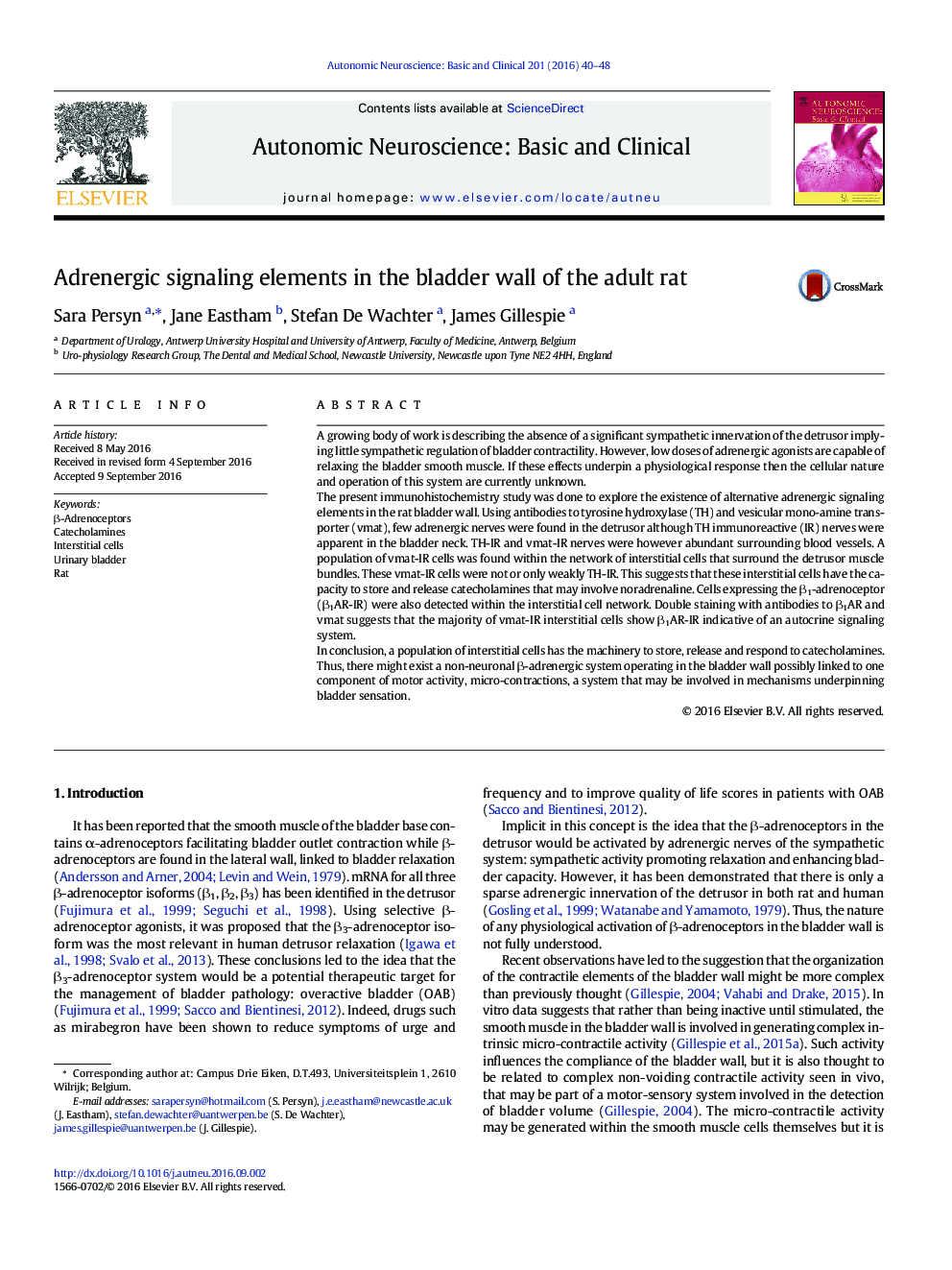| Article ID | Journal | Published Year | Pages | File Type |
|---|---|---|---|---|
| 5625991 | Autonomic Neuroscience | 2016 | 9 Pages |
â¢The adrenergic innervation of the detrusor is sparse.â¢Î²1-Adrenoceptors can be found on interstitial cells surrounding the detrusor muscle.â¢A population of interstitial cells also contain a catecholamine transporter.â¢Indication for the existence of a non-neuronal autrocrine system in the detrusor
A growing body of work is describing the absence of a significant sympathetic innervation of the detrusor implying little sympathetic regulation of bladder contractility. However, low doses of adrenergic agonists are capable of relaxing the bladder smooth muscle. If these effects underpin a physiological response then the cellular nature and operation of this system are currently unknown.The present immunohistochemistry study was done to explore the existence of alternative adrenergic signaling elements in the rat bladder wall. Using antibodies to tyrosine hydroxylase (TH) and vesicular mono-amine transporter (vmat), few adrenergic nerves were found in the detrusor although TH immunoreactive (IR) nerves were apparent in the bladder neck. TH-IR and vmat-IR nerves were however abundant surrounding blood vessels. A population of vmat-IR cells was found within the network of interstitial cells that surround the detrusor muscle bundles. These vmat-IR cells were not or only weakly TH-IR. This suggests that these interstitial cells have the capacity to store and release catecholamines that may involve noradrenaline. Cells expressing the β1-adrenoceptor (β1AR-IR) were also detected within the interstitial cell network. Double staining with antibodies to β1AR and vmat suggests that the majority of vmat-IR interstitial cells show β1AR-IR indicative of an autocrine signaling system.In conclusion, a population of interstitial cells has the machinery to store, release and respond to catecholamines. Thus, there might exist a non-neuronal β-adrenergic system operating in the bladder wall possibly linked to one component of motor activity, micro-contractions, a system that may be involved in mechanisms underpinning bladder sensation.
